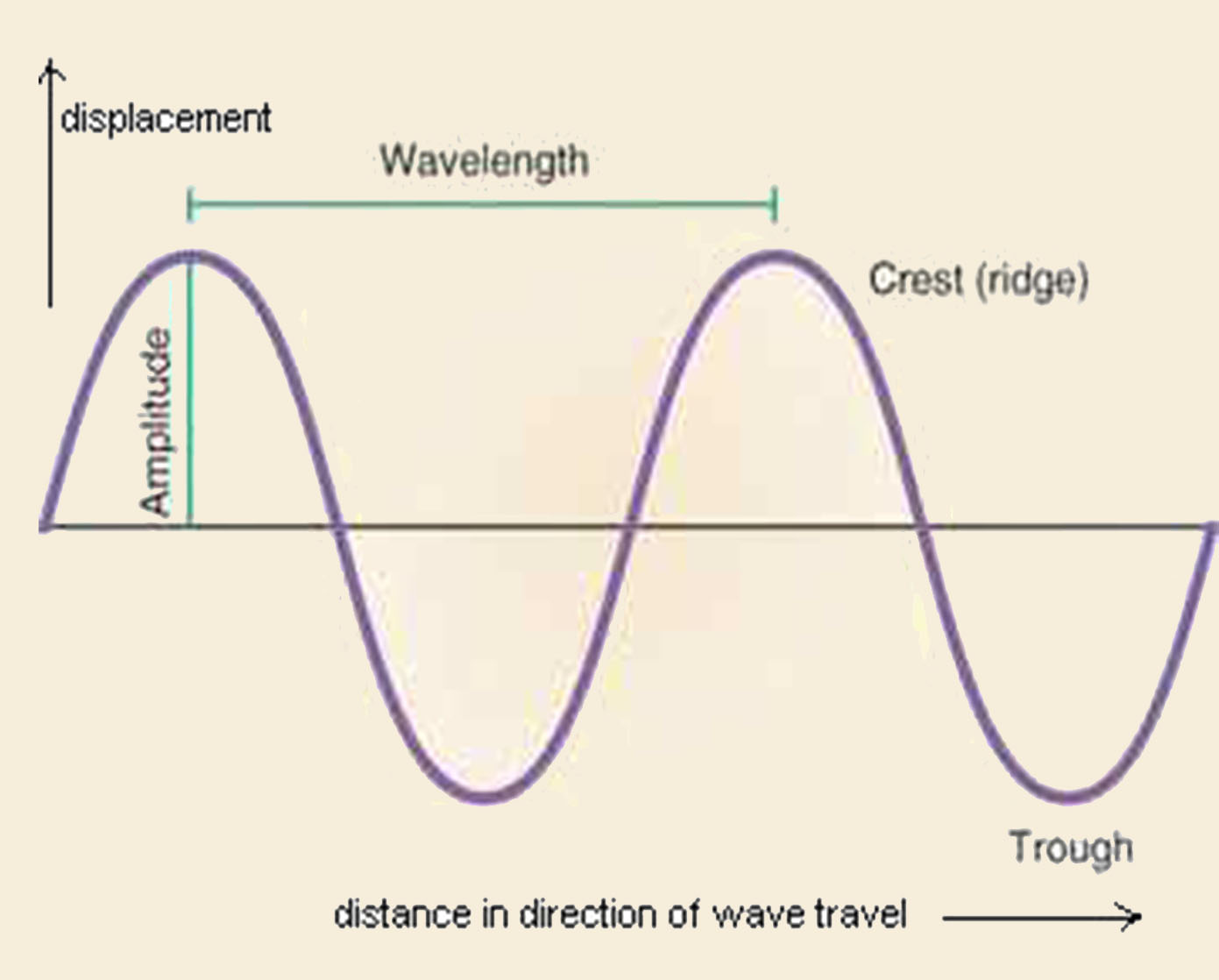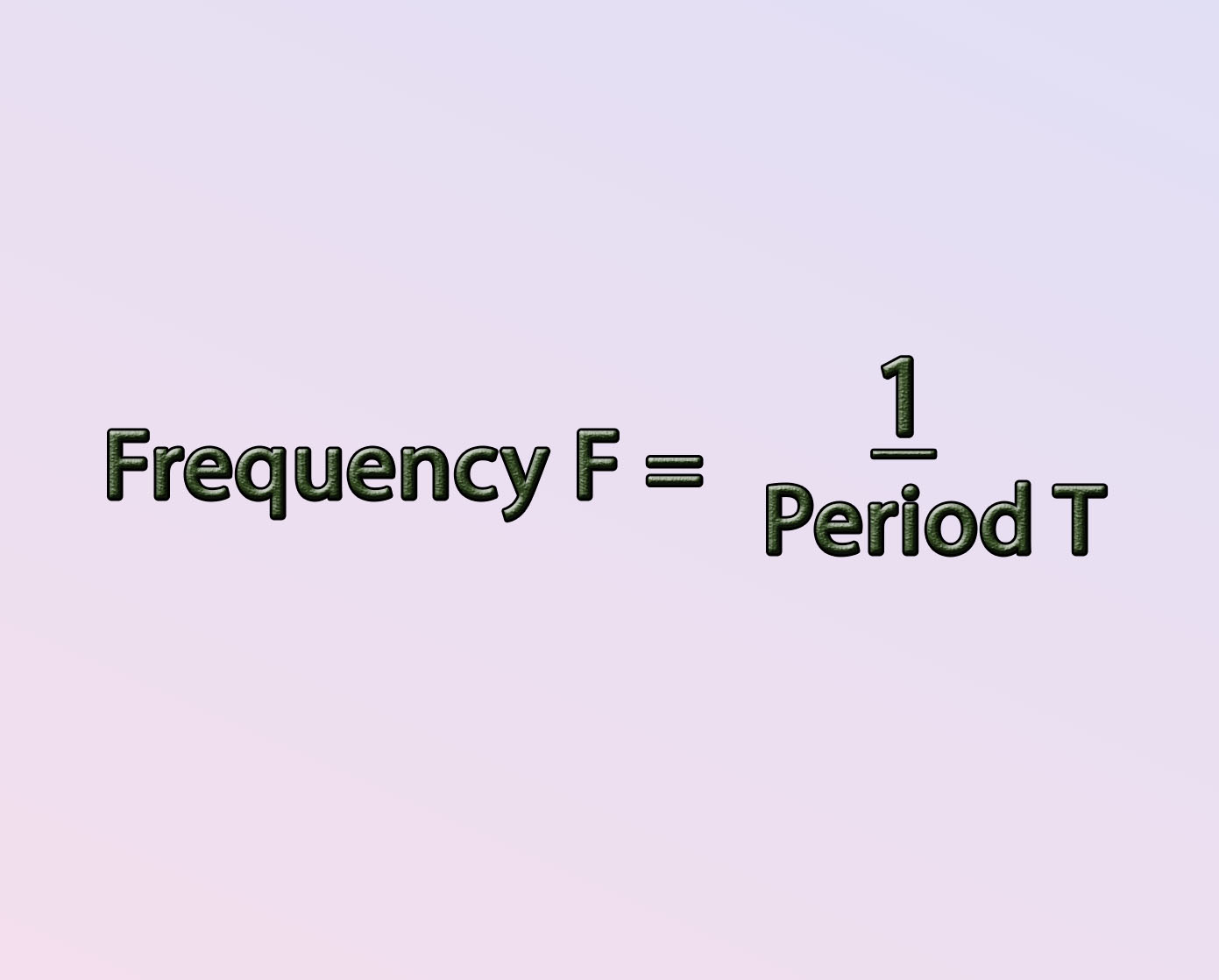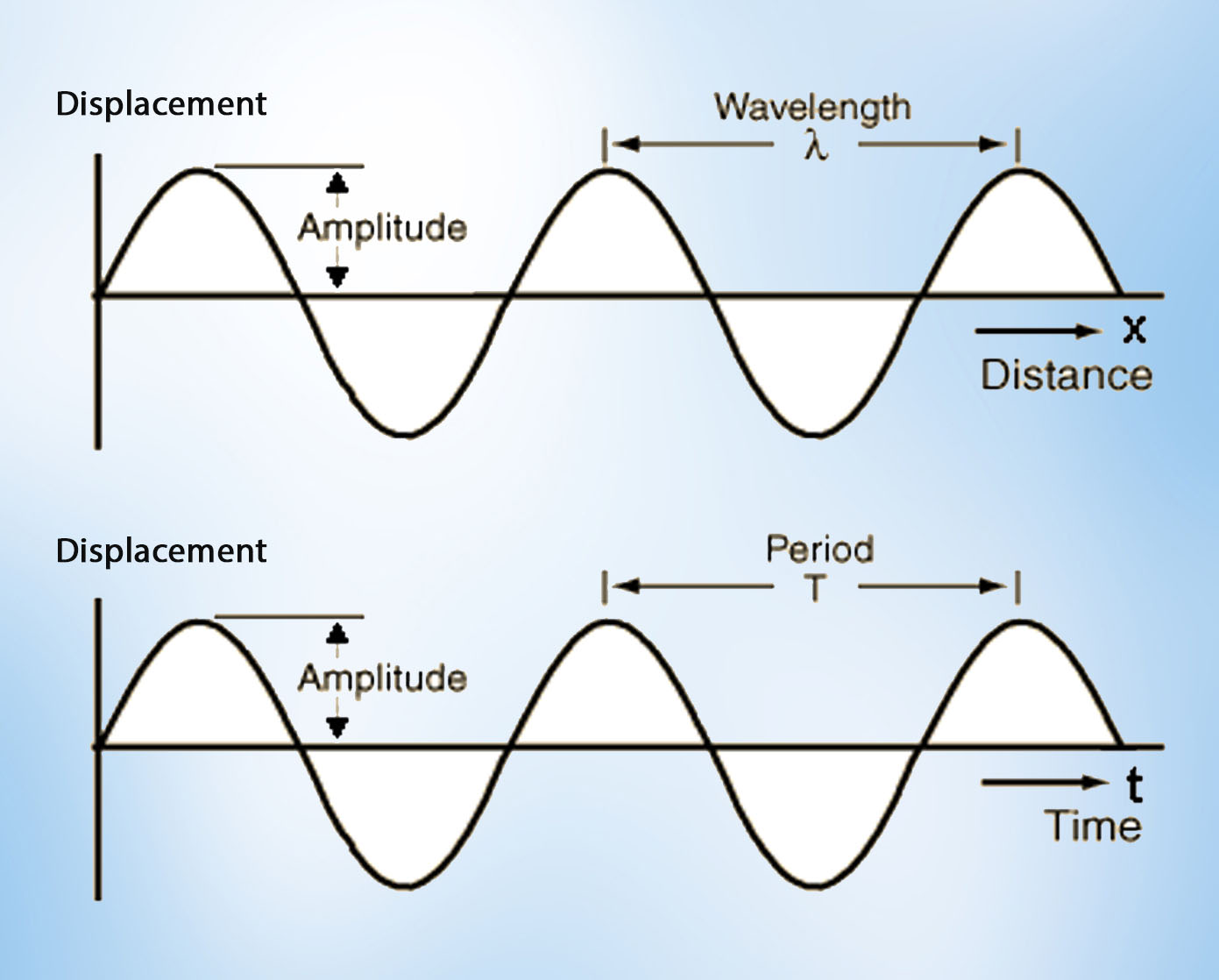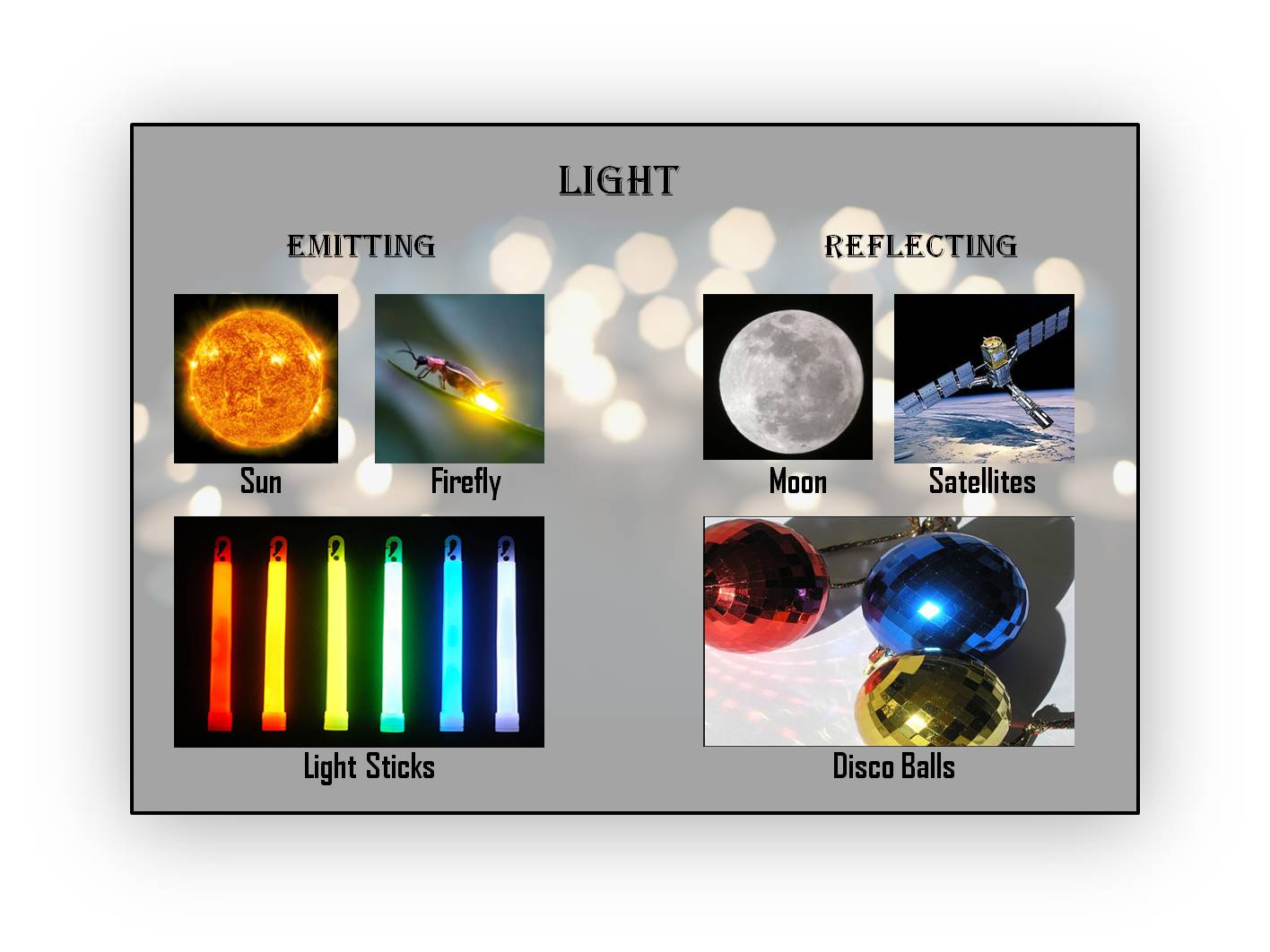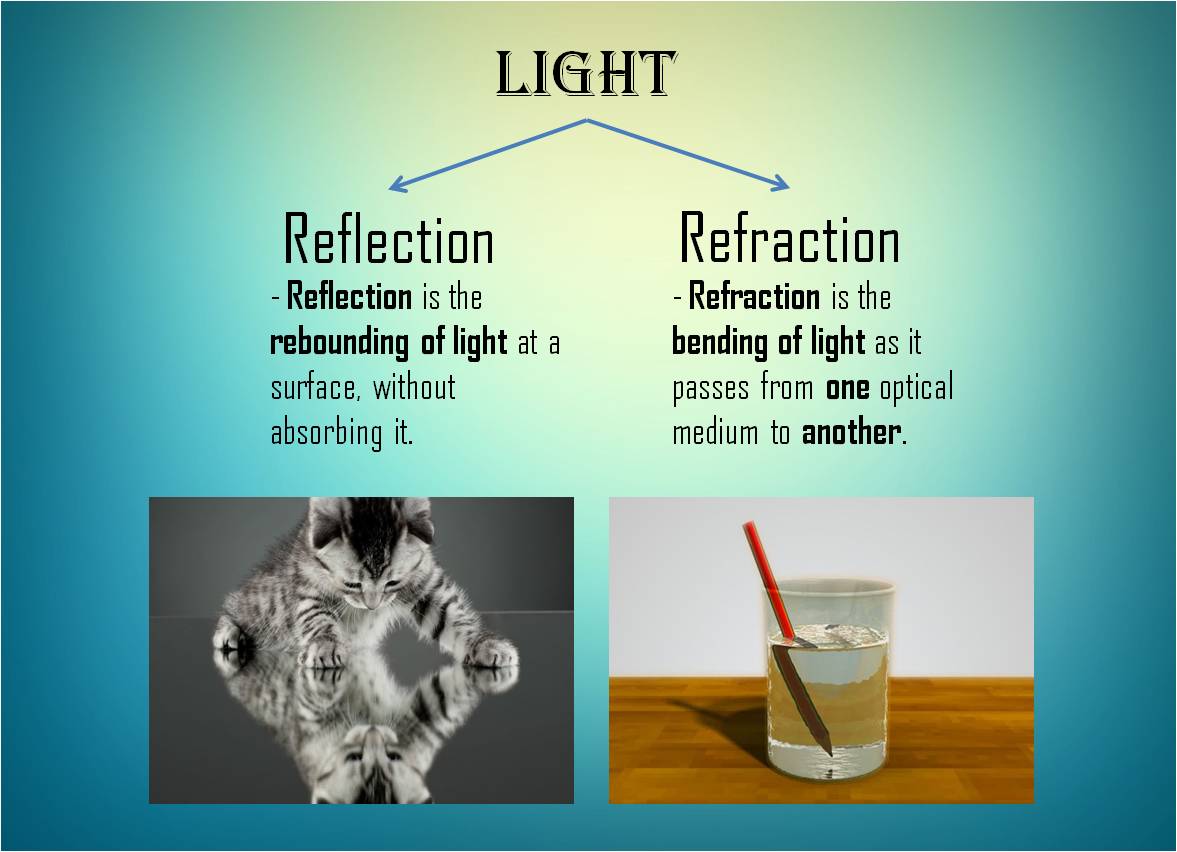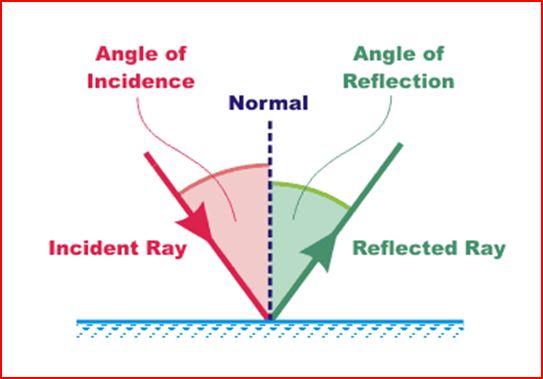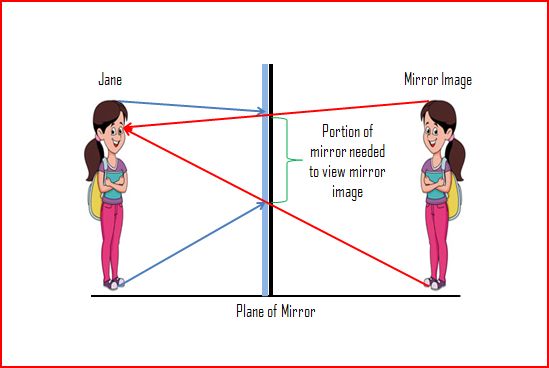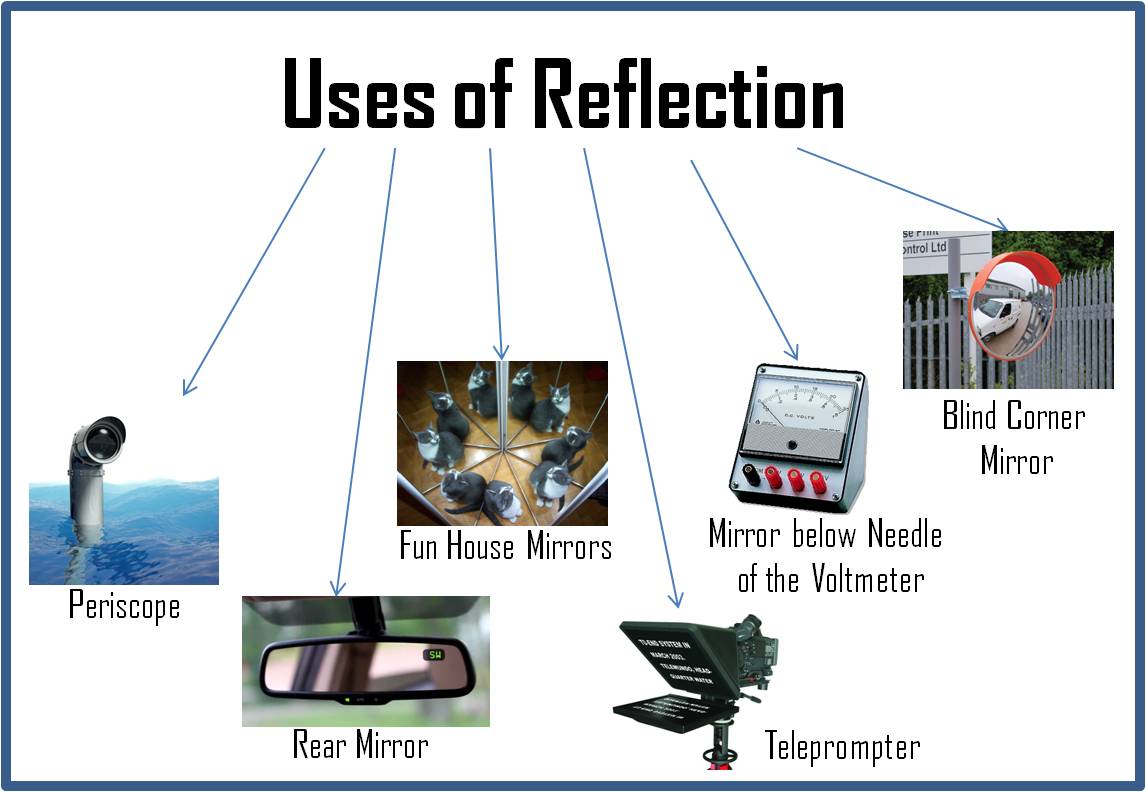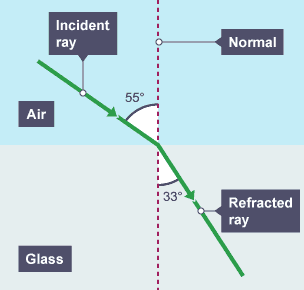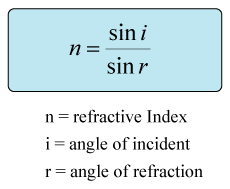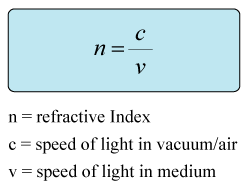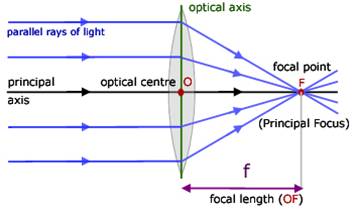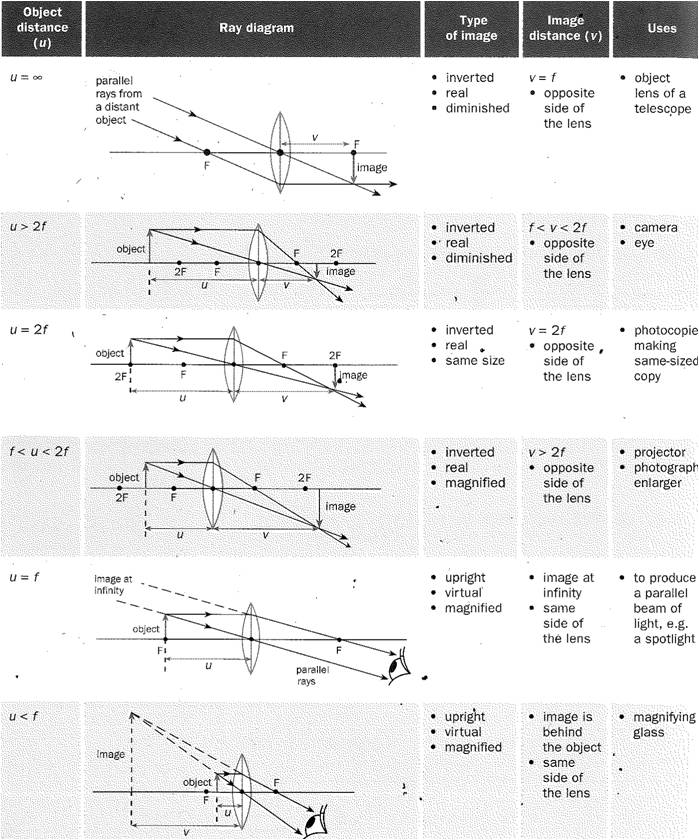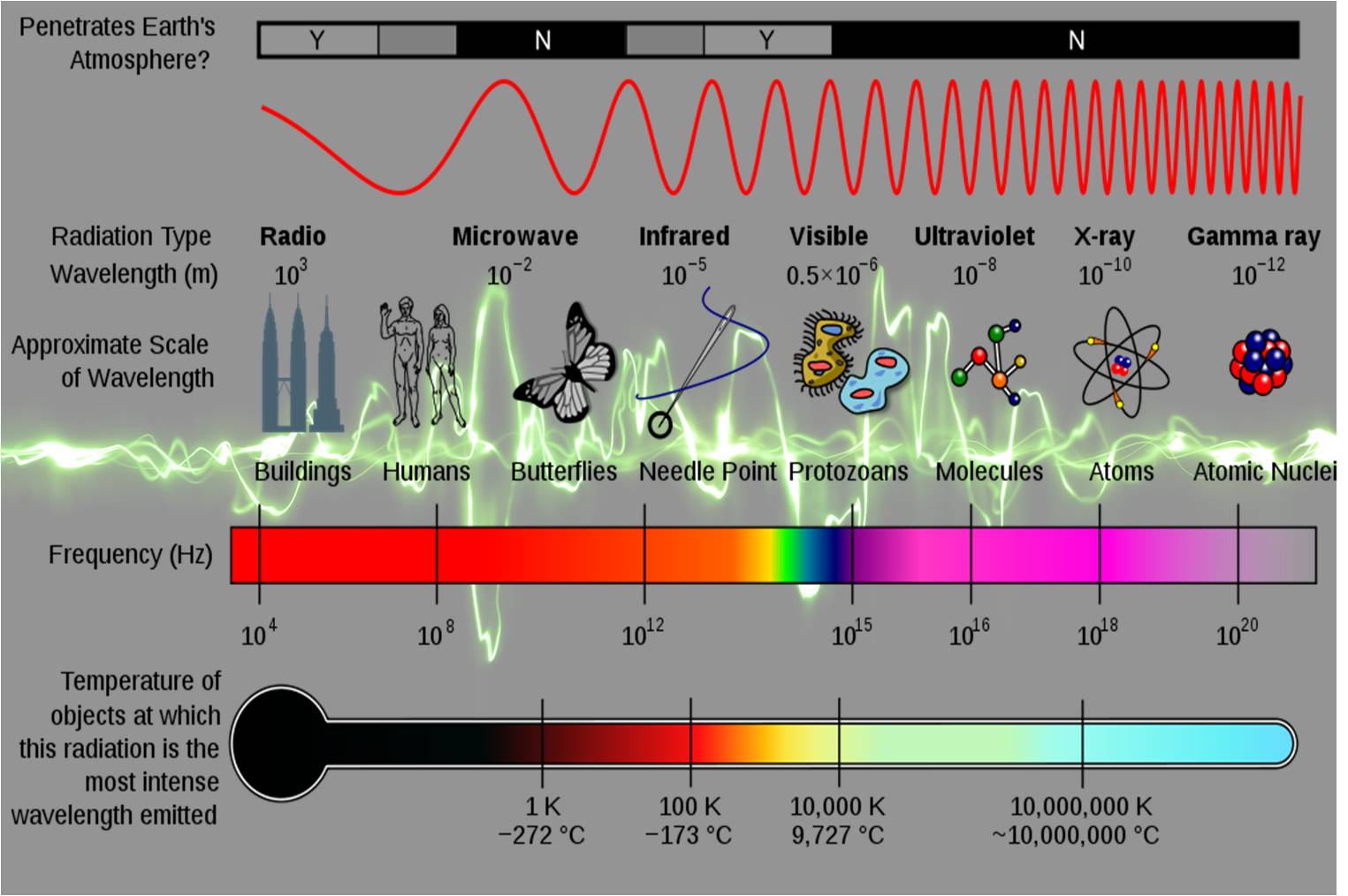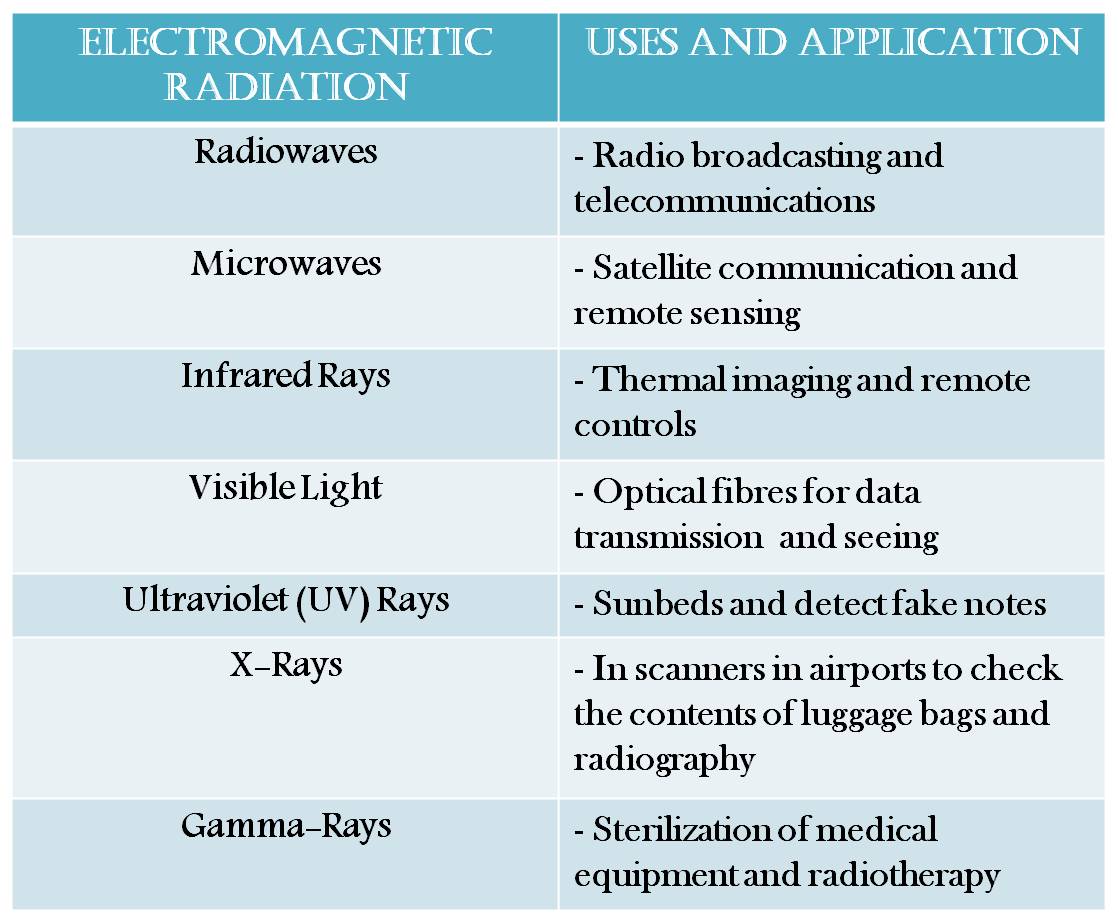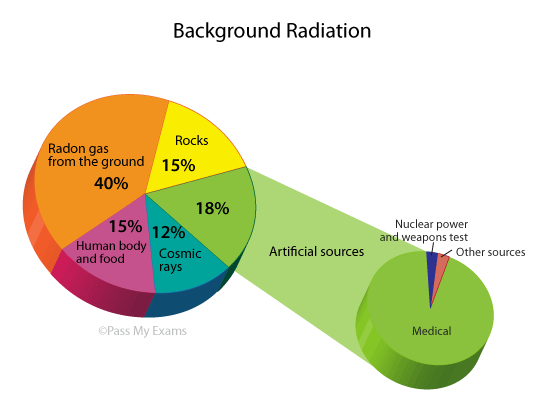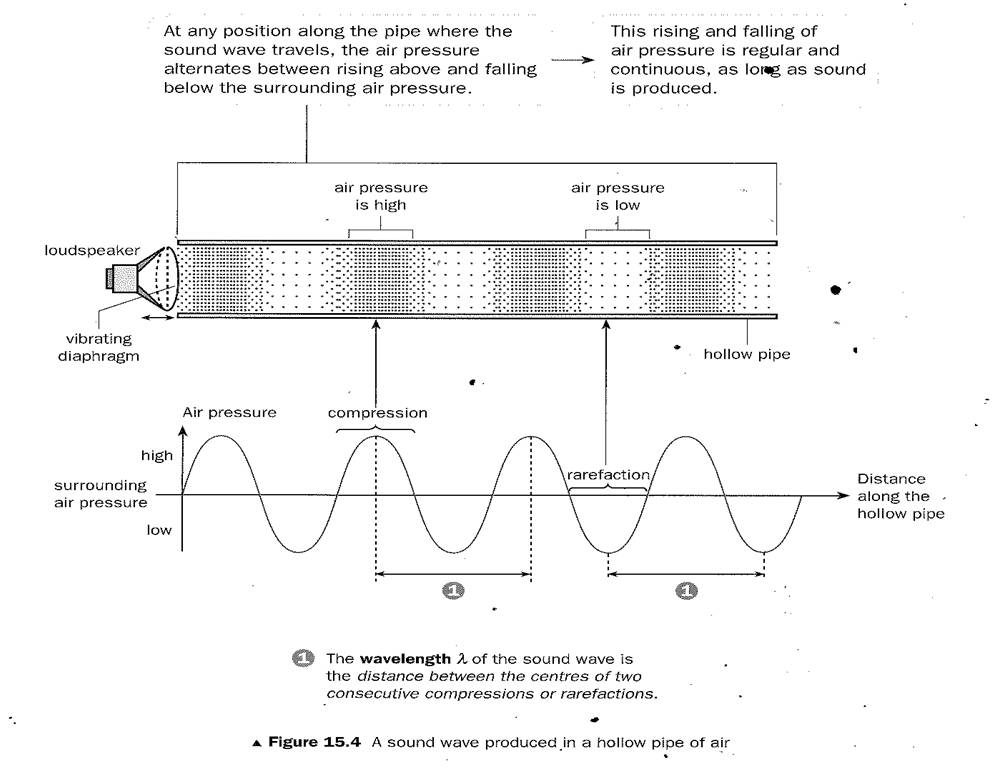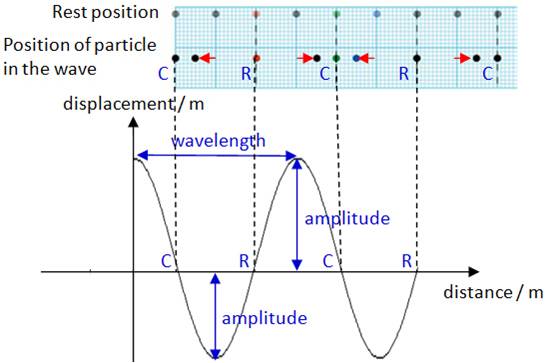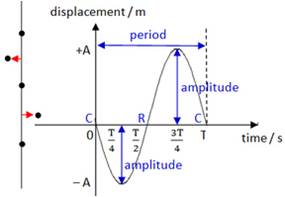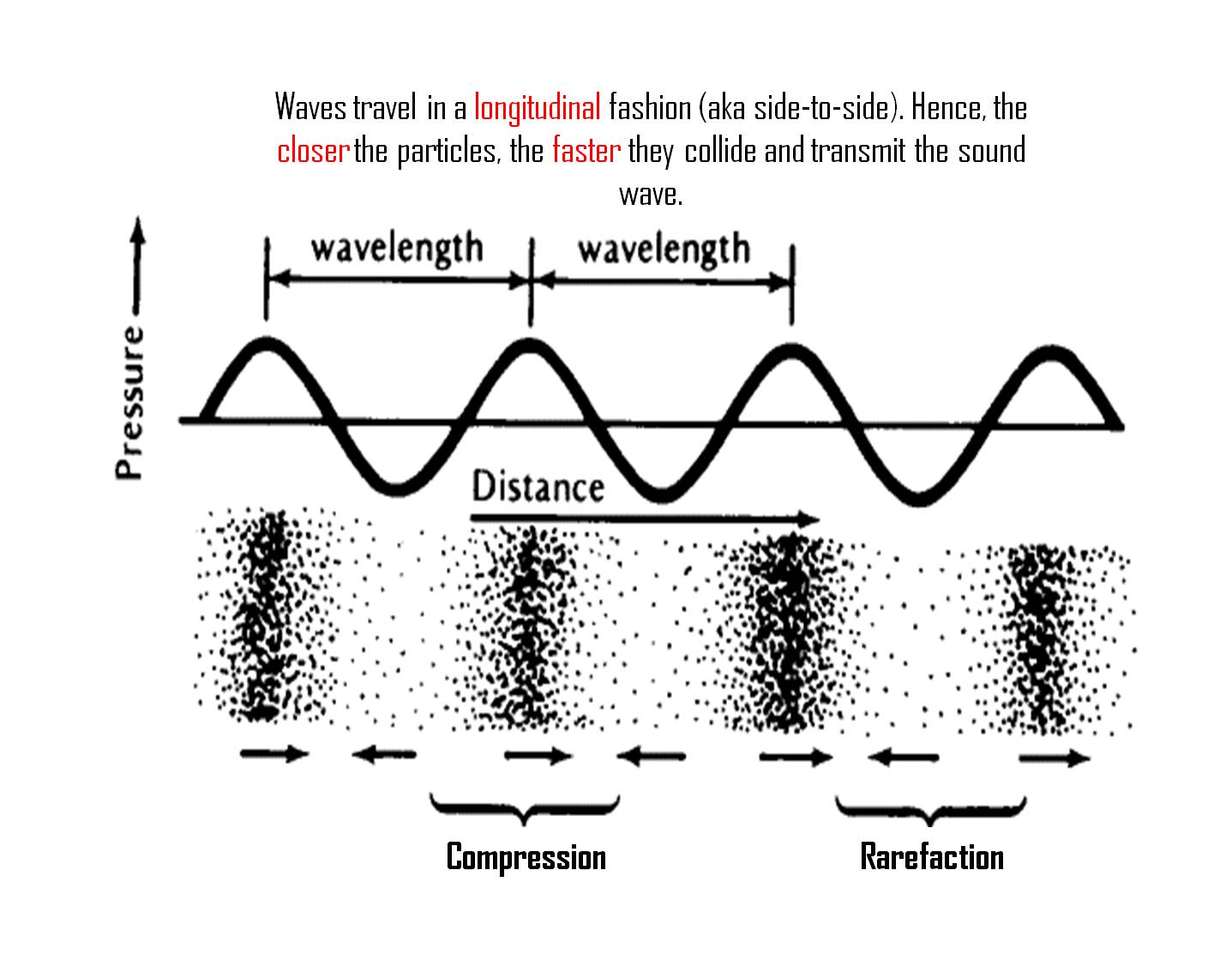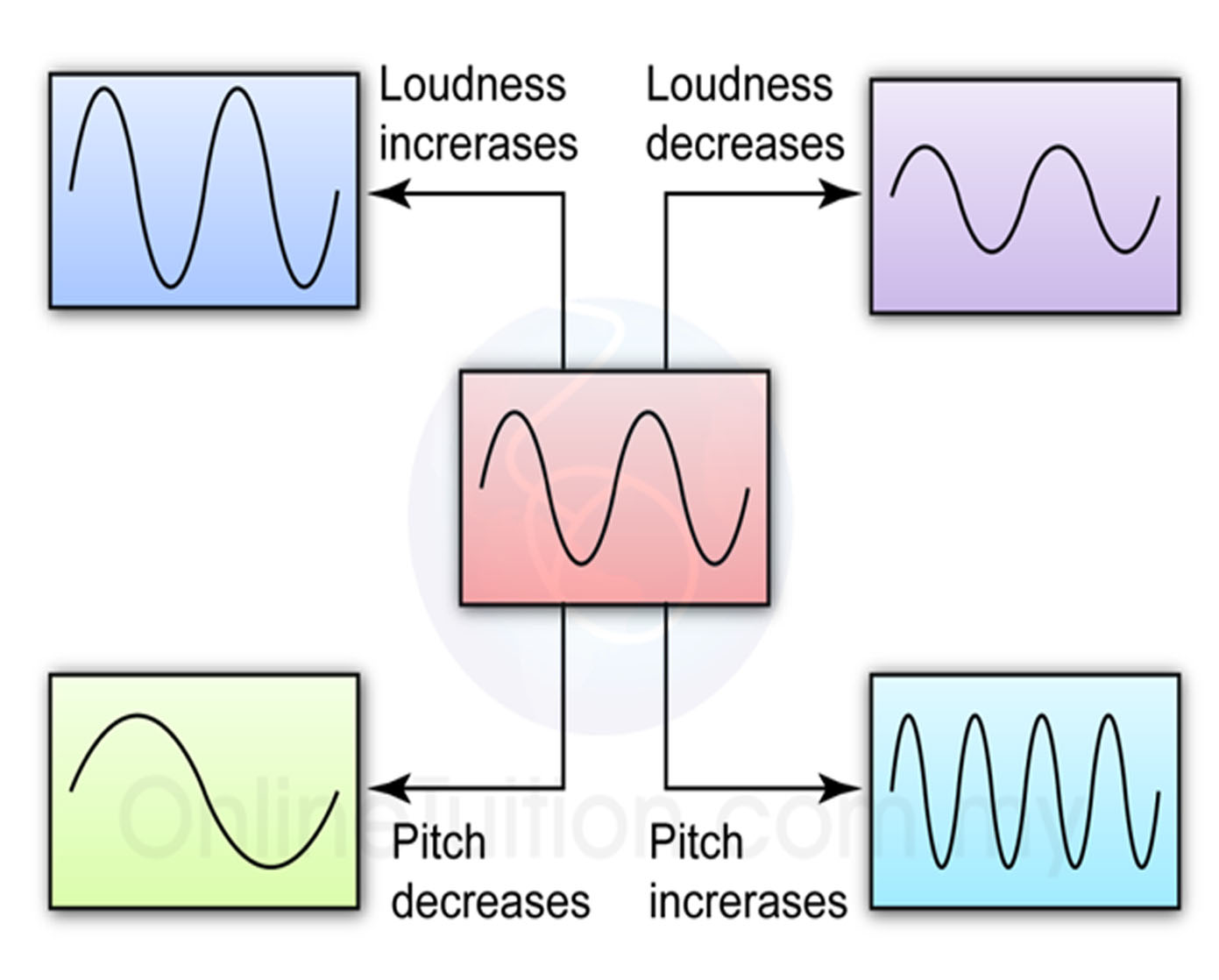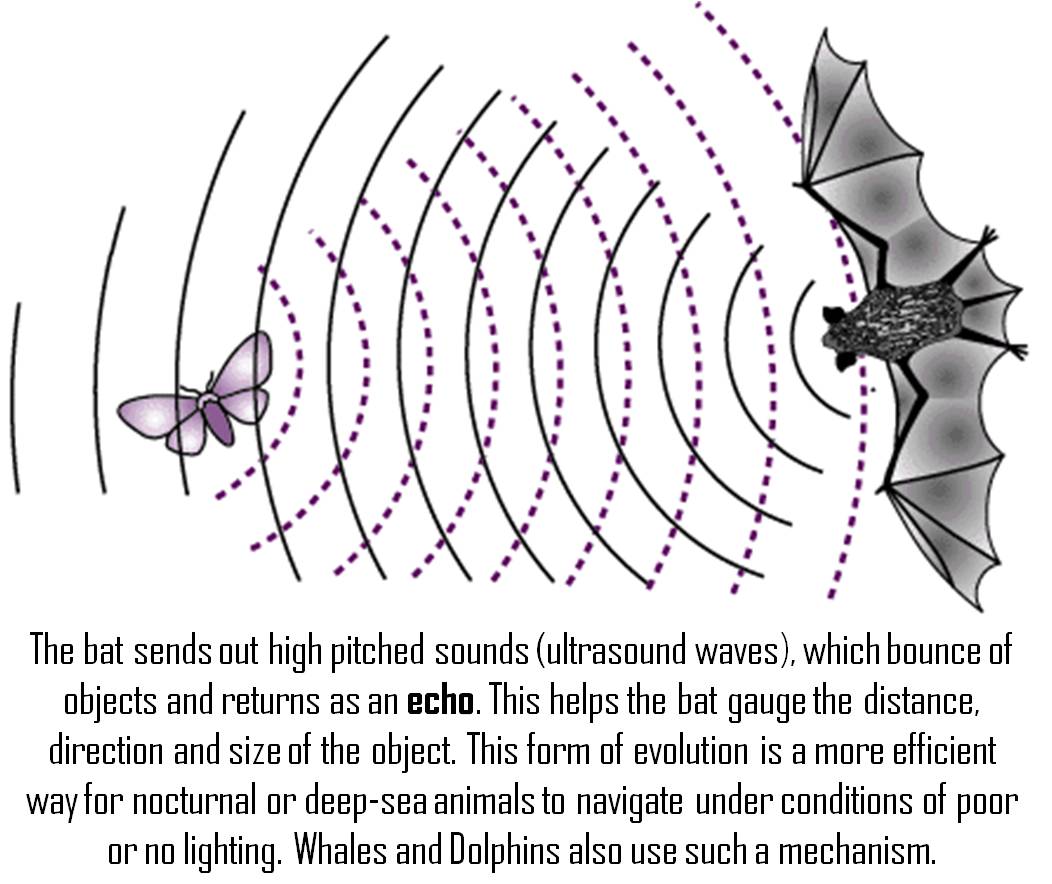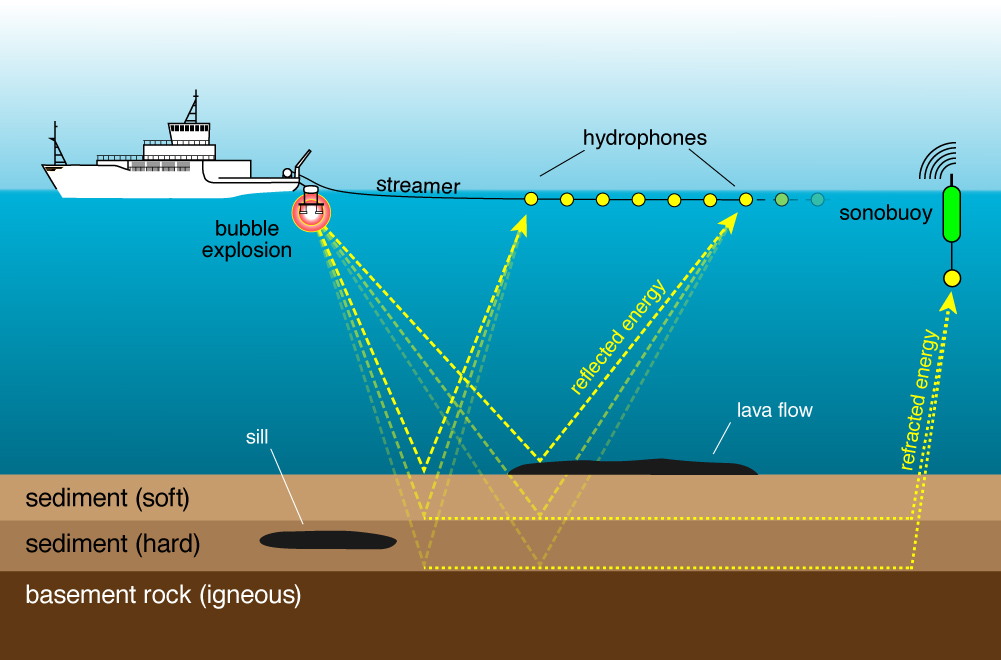Definition of Wave
A wave is a vibration that carries energy away from the wave source.
Definition of Tranverse VS Longitudinal Waves
Traverse waves are waves which travel in the direction perpendicular to the direction of vibrations.
Longitudinal waves are waves which travel in a direction parallel to the direction of vibrations.
Sound waves are classified as longitudinal waves. Tidal waves are considered as transverse waves. Waves are classified according to how the particles move.
What is a Wave Front
A wave front is an imaginary line connecting all the points of a wave that are in the same phase.
What is a compression and rarefaction
Compressions and rarefactions are both used to describe different regions in a longitudinal wave A compression is a region where the particles are closest togethe. A rarefaction is a region where the particles are furthest from each other.
Crest VS Troughs
A wave crest is known as the highest point of the medium in which there is a wave. A wave trough is the lowest point of the medium in which there is a wave.
Both amplitude and wavelength can be determined from a Displacement VS Distance graph
The amplitude is the maximum displacement from rest position.
The wavelength is the distance between any two consecutive points that are in phase.
Frequency f
The frequency of a wave is the number of cycles completed per unit time. SI Unit: Hertz, Hz
Relationship between period and frequency: f = 1/T
Period T
The period is the amount of time taken for the wave to complete one full cycle. Below shows how todifferentiate wavelength and period on a graph. *Note that they have different x-axis.
Speed of Wave
The speed of a wave is the distance travelled by the wave per unit time.
Formula of speed of wave: v = f?
Reading Wave Graphs
By studying the Displacement-Time and Displacement-Distance graphs, we are able to deduce the amplitude, wavelength, frequency and period of a wave.
Refraction
Wave refraction of waves involves a change in the direction of waves as they pass from one medium to another.It is also known as the bending of the path of waves,and is accompanied by a change in speed and wavelength of the waves.
Waves Interactive Tool
How does amplitude and frequency differ? When you combine 2 waves from different directions, what kind of wave would you get eventually? Use the interactive tool below to gain a deeper understanding of how waves work.
What is light
Light is the Smallest quantity of energy that can be transported. It consists of photons, an elementary particle without a real size that cannot be split, oly created or destroyed. Watch the video below ot gain a deeper understanding on light itself.
Examples of Light
There is a difference between light emitting and light reflecting. Here are some examples.
Comparison of reflection and refraction
Reflection and refraction both refer to different things. Both describes the way light behaves when it approaches an object that is opaque, translucent or transparent. Look at the table below.
Angle of Reflection
The angle of incidence is known as the angle between the incidence ray and the normal.
The angle of reflection is known as the angle between the reflected ray and the normal.
The normal is the line that runs perpendicular to the surface.
First & Second Law of Reflection
The first law of reflection states that the incident ray, reflected ray and normal all lie on the same plane. This means that the normal,incident ray and reflected ray all converge at a same point on the reflective surface. Such is the case of mirrors or shiny surfaces.
The second law of reflection states that the angle of incidence is equal to the angle of reflection. These angles are measured with respect to the normal.
The Laws of Reflection
Watch the video below to visualise what the laws actually mean.
Characteristics of an Image.
The image that is seen on a plane mirror possesses certain characteristics that make it unique.
1. Same size as the object
2. Laterally Invertted (Meaning that the image whose left-hand side is the right-hand side of the object and vice versa.
3. Upright
4. Virtual (Meaning that the image cannot be captured on a screen , and where light rays do not meet at the image position.
5. Its distance from the mirror is equal to the distance of the object from the mirror.
Real Life Applications
In reality, such a phenomenon is taken into consderation when designing words or images. For instance, the word "Ambulance" is always written in a laterally inverted manner, as seen below. (TIP: Use items with reflective surfaces (e.g. staplers, metallic items to help you decipher how the image looks like in a mirror.)
What is a Real and Virtual Image?
A real image is an image that can be captured on a screen (e.g. those in a movie theatre), and where the light rays all meet at the image position.
A virtual image is an image that cannot be captured on a screen, and where the light rays do not meet at the image position.
A REAL image can be captured on a screen, a VIRTUAL image cannot.
How to draw a Ray Diagram
Watch the video below to learn how to draw a ray diagram!
Uses of Reflection
The image below shows the daily uses of reflection.
Definition of Refraction
Refraction is the bending of light as light passes from one optical medium to another.
Refraction: Bending of Light in different mediums.
Incidence and Refractive Rays
The incidence ray is the light ray that strikes the surface.
The refractive ray is the light ray that enters the medium and undergoes a change in direction
The angle of incidence is the angle between the incident ray and the normal at the point of incidence.
The angle of refraction is the angle between the refracted ray and the normal at the point of incidence.
The point of incidence is the point at which an incident ray strikes a surface.
Refractive Index
The refractive index of a medium is the ratio of the speed of light in a vacuum
Formula for Refractive Index
The image below shows the formula to calculate the refractive index, n:
Formula for refractive index involving light
The image below shows the formula to calculate the refractive index, that involves light.
Refraction in everyday life
Take a look at the Archer Fish. It is able to shoot down its prey as its eyes are corrected to account for the refractive index.
Definition of terms
Principal Axis: The line perpendicular to the lens and passes though the optical centre of the lens.
Optical Centre: The geometric centre.
Focal Point: It is the point on the principal axis at which rays parallel to the principal axis will converge after refraction.
Focal Length: The distance between the optic centreand the focal point
Drawing of a Ray Diagram
The focal point, principal axis, focal length and optical centre all play a part in determining the image that is drawn. Watch the video below and observe how th diagrams are drawn.
Different Ray Diagrams
The image below shows a variety of different ray diagrams.
Refraction Interactive Tool
When light travels from one medium to another, it bends due to the different refractive indexes. Use the interactive tool below to help you gain a deeper understanding on how refraction works. Have fun!
What are Electromagnetic Waves?
What are Electromagnetic waves? How are they useful? Watch the video below!
Definition of Electromagnetic Waves
Electromagnetic Waves refer to a family of waves that make up the Electromagnetic spectrum. The spectrum consists of seven components.
Properties of EM waves
Electromagnetic waves have the following properties:
1. They are all transverse waves.
2. The can travel through a vacuum.
3.The transfer energy from one place to another (i.e. EM waves from the sun transport light energy from the sun.)
4. They travel at the same speed as light, which is 3.0 x 10^8 m/s
5. The wave speed equation i.e. V = f?, can be applied
6. When they travel from one medium to another, its (1) speed and wavelength changes (2) frequency DOES NOT change.
7. They obey the laws of reflection and refraction
8. They hav no electrical charge
Uses and Applications of EM Waves
Here are the uses and applications of EM waves in our daily lives. The list is not exhaustable, and the table below only lists some of the more common uses of different EM waves.
Purpose of different EM waves
The different wavelengths are used in accordance to the their PENETRATING POWER. EM waves with a higher penetrating power (e.g. UV, X-rays) are used for medical purposes. This is seen in the case of chemotherapy and disinfecting equipment. Those with lesser penetrating power would be used for transmission purposes, such as radiowaves and microwaves.
The penetrating power of each EM wave is in turn, broadly dependent on the frequency of the EM wave. A lower frequency EM wave is usually highly penetrative as the material that it strikes does not have enough energy to be absorbed by atomic transitions*(additional info). aka how much energy a material has to absorb the high energy photons that are emitted.
For instance, those of lower frequencies can be used for penetrating the human skin or bacteria. Such is the case of UV rays being used to sanitise medical equipment. The UV rays cause the bacteria to heat up and then explode. This results in the death of the
Effects of Electromagnetic Waves
Absorbing different EM waves can result in different effects on life and the health of those who are under its influence. For instance:
1. Ionising radiation on living matter.
- Ionising radiation is radiation that possessesenought energy to remove electrons from known atoms or molecules. Most of us are exposed to radiation of some form, the most common from radon gas that emits from the ground.
2. Infrared heating
- The heat that we feel from barbeques or from overly-charged handphones is actually due to the infrared radiation that is emitted. Our skin and clothes absorb infrared radiation, resulting in us feeling warm.
Electromagnetic Waves Interactive Tools
What happens to an ozone molecule when you shine UV light at it? What do different gas molecules do to different forms of EM waves? Use the interactive tool below to find out!
Definition of Sound
Sound is a longitudinal wave produced by a vibrating source in a medium. Watch the video below to gain a general understanding of what sound is.
Pressure at Compressions and Rarefaction
As sound waves are longitudinal waves, they propagate in a series of compressions and rarefactions. At regions of compressions, the air pressure is high. At regions of rarefactions, the air pressure is low. This can be represented in a Pressure-Distance Graph.
Displacement-Distance Graphs
The particles in a sound wave can also be represented in a displacement-distance graph
Displacement-Time Graphs
Additionally, they are also represented in a displacement-time graph.
Motion of a Sound Wave
The motion of a sound wave is longitudinal. Hence, it travels in a side-to-side motion. The vibrations of the particles as a result of the collisions of each particle on the eardrum is picked up and sent ot the brain, where it is processed into different sounds.
Speed of Sound in Different Media
Any medium which contains particles can vibrate and transmit sound. However, the distance between the particles determines the speed at which sound travels. In solids, where the particles are packed closer together, sounds travels at a much faster speed than when in liquids and gases. Similarly, the speed at which sound travels in liquids is faster than that in gases.
Speed of Sound: Solid >Liquid > Gas
Bell Jar Experiment
The following experiment is used to prove that sound requires a medium for transmission. Watch how the volume of the sound decreases as the pressure decreases, and how subsequently the volume increases as the pressure increases.
Amplitude and Frequency
The amplitude of a sound wave determines the loudness of each sound wave. The larger the amplitude, the louder the sound. The loudness of a sound wave is also a subjective gauge of the sound wave.
The frequency of a sound wave is the pitch of the sound wave. The higher the frequency, the higher the pitch. It is a relative gauge of a sond wave.
In real-life, the musical instruments all blend different sound waves to produce different sounds. Hence, giving displacement-time graphs a very unique shape.
The Speed of Sound
The speed of sound in AIR is 330 m/s
Speed of Sound in Air: 330m/s
Definition of Echo
An echo is a reflected sound
Uses of Echoes
Echoes can be used to judge distances and the location of objects. SONAR technology uses echoes to measure the depth of the seabed and other objects within the water. A Sound Generator releases a sound wave into the sea and waits for the returning echo to be picked up by the receptor. Subsequently, the time interval is recorded and the distance between the ship and the seabed is recorded.
However, SONAR waves are also known to interfere with the navigational sound waves that are emitted by whales and dolphins. This can lead to a loss of ability to echolocate and beaching.
[Supplement] Animals and SONAR
The SONAR mechanism used by ships and submarines are also usd by animals in the following video:
Audible Sound
Audible sound is sound that is within the human audible range of 20Hz and 20 000Hz
Audible Sound: 20 Hz to 20 000 Hz

